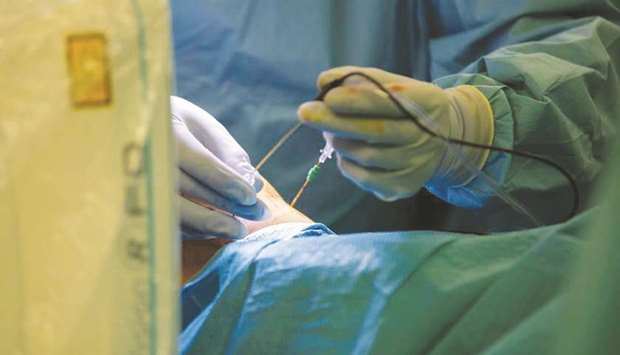
Dr Yasin S al-Makadma, consultant, Pain Management at Aspetar, said: “Radiofrequency (RF) treatment procedures consist of applying a strong, high frequency electromagnetic field at a specific nerve target. The Cooled variant uses a very small current of water to keep the temperature stable and better controlled around the tip of the electrode.
"This technique consists of the use of a needle probe attached to a particular medical device - the RF Generator. The probe is placed under imaging guidance at the target nerve tissue followed by nerve testing before the application of the electromagnetic field. This results in a special type of non-permanent 'lesion' of the nerve fibres allowing very good control of difficult pain conditions. RF lesioning procedures typically require from 15 to 45 minutes”.
Al-Makadma said "unlike surgery, there is no significant skin incision. Local anaesthesia is used before the procedure to reduce discomfort that may be felt during treatment. Most people can return to work one or two days after the procedure."
Where RF lesioning is designed to help people, who suffer from chronic pain, Aspetar experts use C-RF for areas including the knee, shoulder, hip, and the spine.
“It is very important to be aware that no one technique fits all diseases! Therefore, the patient will have to be well-examined, the medical condition investigated by imaging such as X-ray, US or/ and MRI before making the decision to perform this technique or another procedure as needed,” added al-Makadma.
The use of RF has been known for years. However the cooled technology has more recently become available. There is good evidence supporting the use of C-RF. Good outcome is also reported from clinical series using the classic RF and the C-RF (depending on the site to treat).
With a successful procedure, the pain improves or disappears within hours to days.
RF lesioning may provide the pain relief needed to allow patients to resume to their daily activities; pain relief usually lasts for months to years, although results vary depending on the individual.
While this technique is usually done in the operating area, some minor cases are being offered in OPD clinics every Wednesday morning.
Leading the way in cutting-edge technology in the region, Aspetar’s strategic objectives includes sharing and extending clinical knowledge and healthcare delivery expertise to help meet the needs of sportspeople wherever they are, the statement added.
